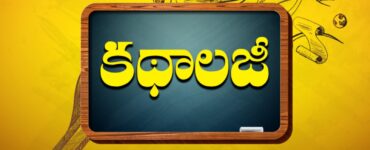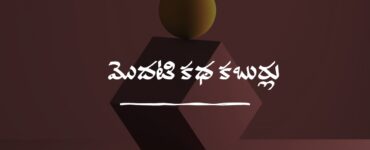Listening to stories is always a soothing experience and story-telling has been there in India for a long time. The very first name that comes to mind with the mention of Tamil fiction is R.K.Narayan, who produced novels and short stories in English from Tamilnadu.
There were several precedents that started writing in Tamil. Also the origin and development of Tamil fiction evokes interest in every enthusiastic reader. It is literally surprising to know that the first novel published was in Tamil. The setting up of printing press in 1710 marked this occasion.
Pratapa Mudaliyar Charitam by Narayana Pillai was the first published Tamil novel. The novels Suguna Sundari and Penmathi malai dealt with fantasy and realistic plots about the life of women and the need for their education and rightful place in society.
After Vedanayagam Pillai, Rajam Iyer and Madhavaiah contributed a lot. SV Guruswamy Sharma needs a special mention as a novelist. The first historical novel that was published in 1895 (though planned in 1775) entitled Mohanangi was written by Saravanamuthu Pillai. Rajam Iyer and Madhaviah also wrote novels in Tamil.
Rajam wrote serially for the Tamil journal Viveka Chinthamani. This serial called Kamalambal Charitham is considered as one of the greatest Tamil novels till date. Padmawati Charitham by Madhavaiah in 1898 (like Vedanayagam Pillai’s work) focused on the welfare of women and their education. He talked about the plight of the Hindu widowed women. He pleaded for the betterment of Hindu widowed women through education and remarriage. Rajam wrote novels in English also.
The Other novelist that needs a mention is Pandit S.M.Natesa Shastri who wrote in English. The last of the stalwarts that ushered in Tamil novel was T.M Ponnusamy Pillai. He focused on different themes related to the middle class family life and used dialogue of the characters in a dramatic way as the vehicle of the novel.
Ramaswami Krishnamoorthy’s contribution is immense. He thought that it was his responsibility to develop the new literary form. In the place of narrative he introduced the adoption of a dramatic technique. Kalavamin Kadal, Kadal, Alai Osai and Sivakamiyin Sapatam are his noteworthy novels. He talked about the inequality in society and the position of women under the patriarchal shadow of men in society.
Alai Osai also appeared in a serial form in the Kalki magazine. This novel reconstructed beautifully the episodes of the Pallava and Chola periods of history. After this Dr.Mu.Va needs a special mention for his novels Kari Tundu, Alii Agal Vilakku and Kayamu. He brought in themes related to life of people from various psychological, social and physical angles. He also exposed corruption in political and official circles in a simple and beautiful style.
Similarly the contribution of Akilan to Tamil fiction is very impressive in terms of quality and quantity. His novels on historical themes portray the background of struggle of freedom. If Nenjin Alaigal talks about the Indian National Army, Vaazhu Engaay talks about the problem of caste system. His other two novels Poovai and Vilakku are considered to be his best works. His works portray the tragic story of hard work, pure love, inner conflicts and despair. Kaval Vizhu is set against the background of Pandya’s history. Shanmugasundaram is another novelist that achieved substantial success by depicting the life and problems of Coimbatore district in his novels Poovum Pinju, Nagammal and Azhia Kollam.
Then there was Janakiraman whose writing career stretched over almost 40 years. He produced both short stories and novels along with travelogues. He is known for his innate capacity for characterization laced with mild humour. His characters blurt out the truth in crucial psychological moments. He exposes the human behaviour in familiar human situations. His contribution though not recognised widely, demands a special place in Tamil fiction writing. A short story collection Pidi Karunai and two of his novels, Vuurthan and Mohamull talk about the psychological issues related to human life.
Like the novel, the short story in Tamil is also of recent origin and development. VVS Iyer and Pudhumaippithan demand a special place among Tamil short story writers. Pudhumaippithan is known for his ruthless portrayal of reality. His subjects are varied in nature and his style of writing and technique established him as a prose poet. He shocked the readers with unexpected themes and readers felt perplexed at his portrayal of women and their feelings so openly. K.P.Rajagopalan’s stories deal with intricate situations in social life and family relationships. He dramatizes the characters’ words in a special style mixing them up with humour and pathos.
Jayakanthan’s special place in Tamil short story is vast. As a story writer, he deals with hypocrisy, life in slums and some other themes which other writers shun to touch. Along with him Azhagiri Swami needs a special mention as a writer of ordinary, day to day life and domestic situations.
The contemporary fiction writing in Tamil was dominated by women like Bama, Raghavan Chudamani, Judy Balan, Githa Hariharan, Lakshmi Holm Storm, CS Lakshmi, P.Sivagami and G.Tilakavati.
Bama Faustina Soothiraj, known as Bama belongs to the Paraiyar community. She rose to fame with the autobiographical novel Karukku in 1992. She produced two more novels Sangathi and Vanmum along with two collections of short stories Kusumbukaran and Oru Tattvum Erumayyam. Her experiences as a teacher at a Catholic Christian School made her write about the oppression of the children and teachers by the Catholic nuns. She was criticized and even ostracised for using the dialect of Tamil of her community. She decided to use the same dialect in all her novels. She received the Crossword Book Award in 2000 and then she focused on caste and gender discrimination.
Lakshmi Holm Strong translated most of the prominent works by Mauni, Pudhumaippithan, Ashok Mitran, Sundara Ramasamy, Lakshmi, Bama, CS Lakshmi and Imrayam. As a feminist writer and as a researcher in feminist studies she published her first work in 1962.
Surprisingly Tamil fiction has two officers as contributors. P.Sivagami is an IAS officer and also an Indian dalit feminist writer. she is the first Dalit woman to write a novel. She published four novels on these themes and exposed the conflicts and struggles between the tenacious women and tyrannical men in a patriarchal society. G.Tilakavathi is a police officer and writer from Tamil Nadu. She exposes the litany of the patriarchal society. As these novels and short stories deal with the serious moments, the comic face of Tamil fiction is represented by Judy Balan who writes parodies of Chetan Bhagat’s novels.
Apart from the writers writing in Tamil, Tamil literature has writers’ writing directly in English about the culture people and conflicts of Tamil Nadu. Gita Hariharan needs a special place for her contribution in English.
C.S.Lakshmi (b.1944) is an Indian feminist writer and independent researcher in women’s studies. Her story Siragukalmuriyum received a critical acclaim and the subsequent stories established her as a major short story writer.
Along with fiction, Tamil drama also needs a mention with Indira Parthasarathy as a playwright apart from writing short stories and novels. His plays have been translated into Hindi Naarka.alii.karan is another significant name in the history of Tamil drama.
The contemporary Tamil drama was developed by Anupama Chandra Sekhar. Her plays are being staged in India, Europe, Canada and the US. She was the first Royal National Theatre’s International playwright in residence from 2016 to 17. Her plays Indu Ruba Singham, The Snow Queen, When the Crows Visit Acid and Closer Apart talk about several complex issues like sexual violence and patriarchy.
*









Add comment